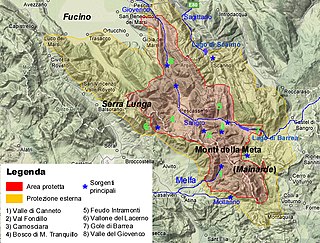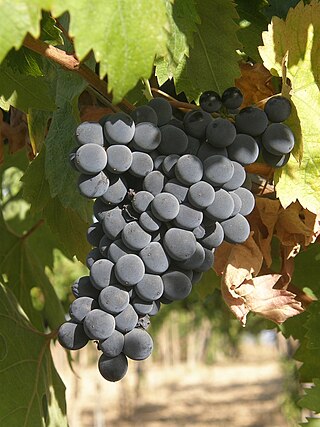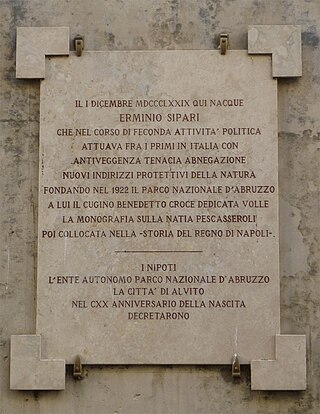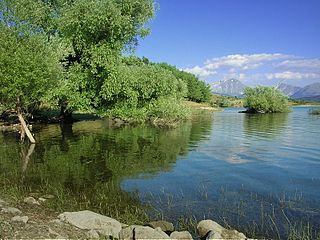
The Appian Way is one of the earliest and strategically most important Roman roads of the ancient republic. It connected Rome to Brindisi, in southeast Italy. Its importance is indicated by its common name, recorded by Statius, of Appia longarum... regina viarum.

Neapolitan is a Romance language of the Italo-Dalmatian group spoken across much of mainland Southern Italy, and spoken in a small part of Central Italy. It is named after the Kingdom of Naples, which once covered most of the area, since the city of Naples was its capital. On 14 October 2008, a law by the Region of Campania stated that Neapolitan was to be protected.

Roman Italy was the homeland of the ancient Romans. According to Roman mythology, Italy was the ancestral home promised by Jupiter to Aeneas of Troy and his descendants, Romulus and Remus, who were the founders of Rome. Aside from the legendary accounts, Rome was an Italic city-state that changed its form of government from Kingdom to Republic and then grew within the context of a peninsula dominated by the Gauls, Ligures, Veneti, Camunni and Histri in the North, the Etruscans, Latins, Falisci, Picentes and Umbri tribes in the Centre, and the Iapygian tribes, the Oscan tribes and Greek colonies in the South.

Abruzzo, Lazio and Molise National Park is an Italian national park established in 1923. The majority of the park is located in the Abruzzo region, with smaller parts in Lazio and Molise. It is sometimes called by its former name Abruzzo National Park. The park headquarters are in Pescasseroli in the Province of L'Aquila. The park's area is 496.80 km2 (191.82 sq mi).

Pescasseroli is a town and comune in the province of L'Aquila, in Southern Abruzzo, central Italy.
Macchiagodena is a town and comune in the province of Isernia, located high in the Apennine mountains in the region of Molise, southern Italy.

Spaghetti and meatballs is an Italian-American dish consisting of spaghetti, tomato sauce and meatballs.
The transumanza is the Italian term for transhumance, the traditional twice yearly migration of sheep and cows from the highlands to the lowlands, and back. The word literally means "crossing the land".

Montepulciano is a red Italian wine grape variety that is most noted for being the primary grape behind the DOCG wines Offida Rosso, Montepulciano d'Abruzzo, Montepulciano d'Abruzzo Colline Teramane, Rosso Conero and the DOC wine Rosso Piceno Superiore.
The Giardino Botanico e Arboreto Appenninico del Parco Nazionale d'Abruzzo is a botanical garden and arboretum located in the Parco Nazionale d'Abruzzo, Lazio e Molise at via Santa Lucia, 67032 Pescasseroli, Province of L'Aquila, Abruzzo, Italy.

Bombino bianco is a white Italian wine grape variety planted primarily along Italy's Adriatic coast line, most notably in Apulia. The vine is prone to high yields and often produces neutral flavor wines. The grape is known under many synonyms throughout Italy including Debit and Pagadebit, names which came from the grape's reputation for being a high yielding and reliable crop for vineyard owners to grow that would assure them that on each vintage they could pay off their debts.

Erminio Sipari was an Italian politician and naturalist, author of studies on the preservation of nature and founder of Parco Nazionale d'Abruzzo, which he chaired from 1922 to 1933.

Lorenzo Arnone Sipari is an Italian nature writer and historian, author of many studies on the social and environmental history, especially on the origins and foundation of Parco Nazionale d'Abruzzo.
Banca Popolare di Bari S.C.p.A. is an Italian bank based in Bari, Apulia region. The bank covers most of mainland Italy, except Piedmont and Liguria, and all the autonomous regions of Italy: Aosta Valley, Trentino – South Tyrol, Friuli – Venezia Giulia and the islands of Sardinia and Sicily.

Aequum Tuticum was a Roman vicus in southern Italy, about 35 km east-northeast of Beneventum. The site lies beside Saint Eleuterio hamlet, overlooking Miscano Valley at an elevation of 575 m, about 15 km north of the modern Ariano Irpino, within Irpinia historical district. The vicus name is partly Latin and partly Oscan.
The following is a timeline of the history of the city of L'Aquila in the Abruzzo, a region of Italy.
The following is a timeline of the history of the city of Brindisi in the Apulia region of Italy.

The Riserva Naturale di Monte Salviano or Riserva naturale guidata Monte Salviano is a nature reserve in Abruzzo, Italy, established in 1999. It lies in the territory of the comune (municipality) of Avezzano, in the Province of L'Aquila. The reserve is named after Monte Salviano, a massif that extends northwest to southwest dividing the Fucine basin from the Palentine Plains, in the Marsica sub-region.

Over the years, Abruzzo has managed to become the most industrialized region of southern Italy and has had significant improvements and growth also at an economic level; the region has reached and surpassed many Italian regions in the specialization of the various industrial sectors and today it is the richest of the regions of Southern Italy.

The Arianese dialect, typical of the territorial area of Ariano Irpino, is a vernacular variety of the Irpinian dialect, belonging in turn to the Neapolitan group of southern Italian dialects. Like all Romance languages, it descends directly from Vulgar Latin, a language of Indo-European stock that has been widespread in the area since Roman times.















